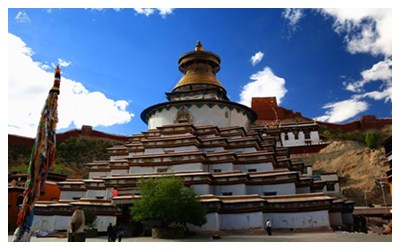Skype: neodalle-travel
Tel: +86 135 7447 2266
E-mail: sales@visitaroundchina.com
 Palcho Monastery, also called Pelkhor Choede or Palcho Monastery, lying about 230 kilometers south of Lhasa and 100 kilometers east of Shigatse City, is a monastery having the characteristics of Han, Tibetan and Nepali architecture. Palcho Monastery enjoys a high status in Tibet Buddhism history because it houses three sects - Sakyapa, Kadampa and Gelugpa together. Those three sects get along well with each other though they once quarreled and fought. The Bodhi Dagoba, the Main Assembly Hall, murals and Zhacang (hall for the monks) in the monastery are the most renowned.
Palcho Monastery, also called Pelkhor Choede or Palcho Monastery, lying about 230 kilometers south of Lhasa and 100 kilometers east of Shigatse City, is a monastery having the characteristics of Han, Tibetan and Nepali architecture. Palcho Monastery enjoys a high status in Tibet Buddhism history because it houses three sects - Sakyapa, Kadampa and Gelugpa together. Those three sects get along well with each other though they once quarreled and fought. The Bodhi Dagoba, the Main Assembly Hall, murals and Zhacang (hall for the monks) in the monastery are the most renowned.
What to see?
Murals in the Palcho Monastery
Murals in the Palcho Monastery are also well known. These murals mainly relate to Esoteric and Exoteric Buddhism, and stories about the Buddhas. Tourists will find them almost everywhere in the monastery. Zhacang refers to the rooms where the monks live. Each sect has their own Zhacang in the monastery.
Saka Dawa Festival
According to Tibetan calendar, April 15th is the most important day of the year. Saka Dawa Festival will be held on that day to commemorate Sakyamuni, the founder of Buddhism. It is said that Sakyamuni was born and passed away on April 15th. During the festival, about five hundred Lamas chant sutras and the loyal pilgrims gather in Palcho Monastery to commemorate Sakyamuni together.
Travel Tips
Add: about 230 kilometers south of Lhasa and 100 kilometers east of Shigatse City,Tibet
Entrance Fees: CNY 60
Opening Hours:09:00-19:00
 Ask Questions ?
Ask Questions ?